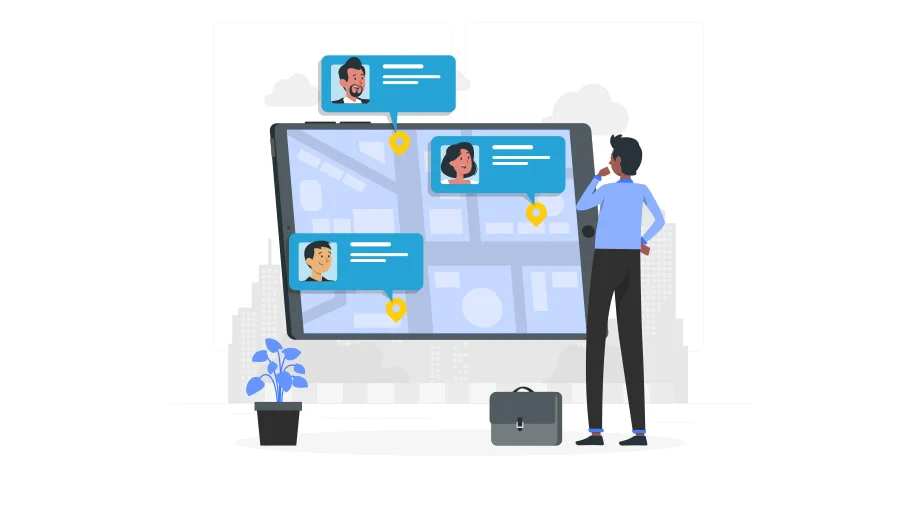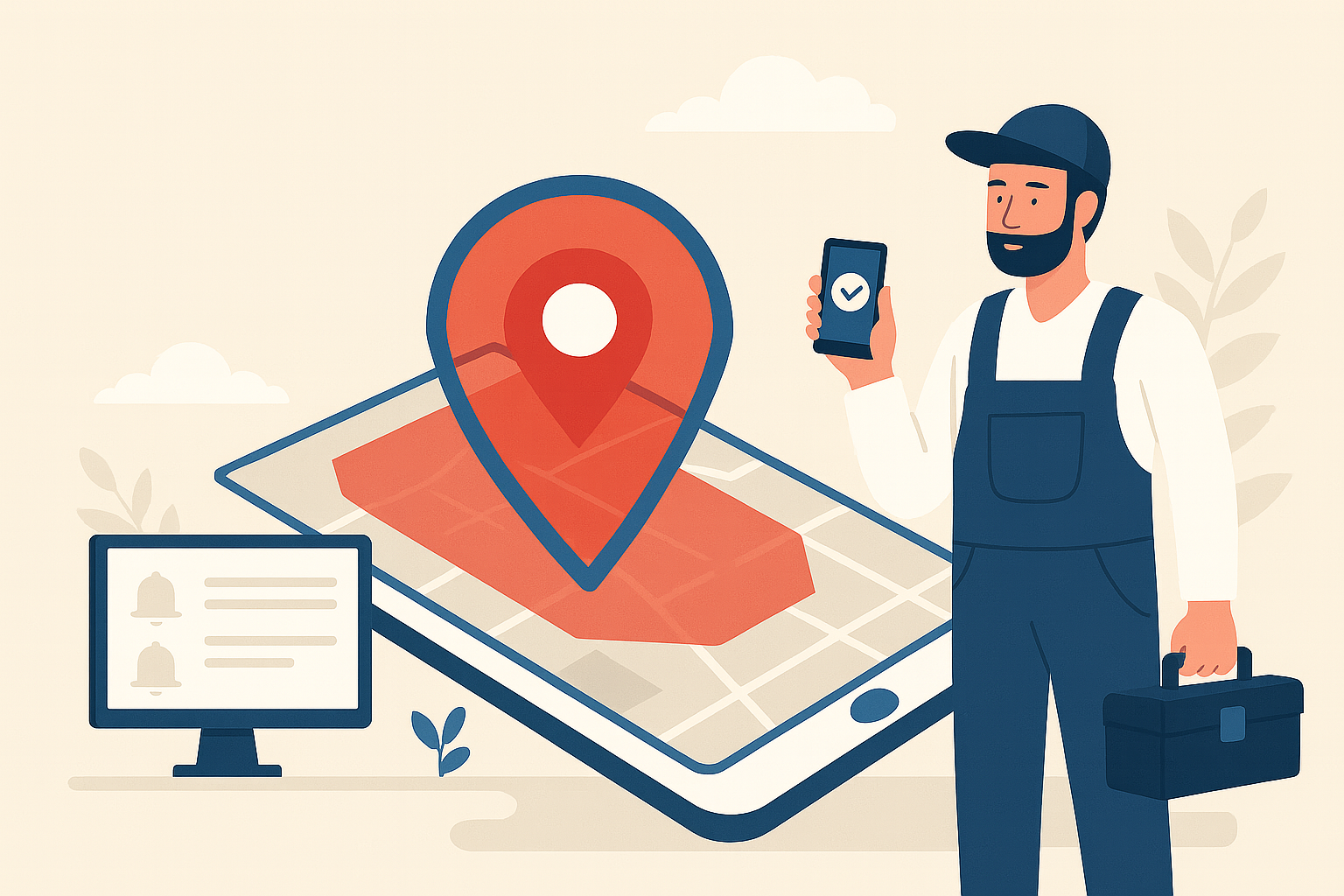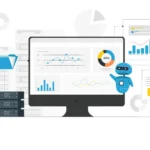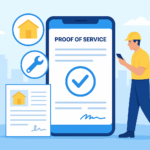What is Geofencing?
A Geofence is a virtual boundary around a predefined real-world area of interest. A virtual perimeter (geofence) can be put up using geofencing software. Imagine it as a digital perimeter that can be drawn around a specific physical area, much like a fence delineating the boundaries of a property. However, in the case of geofencing, this boundary is entirely virtual, constructed through the power of sophisticated geofencing software. Despite the multitude of benefits it offers, businesses are hesitant to adopt it as the struggle with the questions- What is geofencing? How can it streamline my workflow?
Think of it as a flexible tool that lets you establish a virtual net around a designated real-world space, be it a retail store, a construction site, a fleet of vehicles, or even a bustling event venue. This digital boundary is not limited by physical obstacles or constraints, making it an exceptionally versatile asset for businesses with mobile operations.
But what truly makes geofences a game-changer is the intelligent interplay between this virtual perimeter and the devices within its reach. Devices such as smartphones, tablets, and GPS-equipped vehicles can be linked to these geofences, going beyond the boundaries of traditional location-based systems. The ability to monitor, automate, and customize operations within these digital perimeters empowers businesses to make data-driven decisions, reduce operational inefficiencies, and ultimately, enhance their bottom line.
Geofencing facilitates optimized scheduling, real-time monitoring, and improved customer experiences. It enables your workforce to operate with precision, while also offering customers the transparency and reliability they expect.
In the sections that follow, we’ll delve deeper into the practical applications of a geofence, what is geofencing meaning for your business and also explore how it’s already reshaping industries and improving field operations efficiency and innovation.
Applications of Geofencing
Geofencing is a location-based service that can be used for a lot more than just tracking. You may be wondering- “What is geofencing technology’s benefits?” Here are some of its possible applications and use cases:
Service Worker Geofencing: Modern workforce management tools such as allGeo use a combination of GPS, cellular data, and WiFi signals to accurately detect time-clocking activities. This helps with in-visit verification of a worker on a job site, eases attendance verification, and enhances the accuracy of billing employee work hours.
Workflow Automation: Geofencing can help automate operations workflow using rules and triggers. Very few modern tools, like allGeo, support custom work rules that leverage geofencing to automate your business operations.
Vehicle and Load Tracking: Good service and timely deliveries make a huge difference in the load transportation business. Do not forget to go the extra mile for the security of high-value, high-risk, and time-sensitive freight. A geofence, in this case, helps you to know when a driver is close to the destination or is heading where they shouldn’t. Monitor time spent at a location and alert drop locations of an incoming arrival. Say goodbye to “Give me a call when you get there”.
Geofence for Marketing: Creating location-based geofenced marketing campaigns can truly transform all facets of your business. Serving ads and other promotional content to individuals while they are at the geofenced location and after they leave. Ads can also be set up to send phone messages to consumers who happen to be passing their preferred retail stores. This strategy increases brand awareness and can reduce the cost of marketing considerably.
How Can Knowing What is Geofencing Reshape Your Field Service Management?
The field service management industry has long been a bastion of complex logistics, tight schedules, and the constant challenge of optimizing resources. However, with the emergence of geofencing technology, this landscape is undergoing a remarkable transformation. Geofencing is redefining how businesses manage their field operations, enhance customer experiences, and boost overall efficiency.
Imagine a scenario where service field workers are dispatched to various locations throughout the day to address customer requests. Traditionally, ensuring that each field employee reaches the right destination on time and efficiently completes their tasks was a logistical puzzle. Geofencing app changes the game by introducing real-time location awareness and intelligent automation into this equation.
What is Geofencing technology’s role in reshaping the field service operations?
- Optimized Routing and Scheduling: Geofencing allows for the creation of virtual perimeters around customer locations, job sites, or even specific regions. When a field employee enters or exits these zones, automated notifications can be triggered. This means that managers can monitor and manage field employee movements with unprecedented precision. By integrating geofencing data with scheduling software, managers can assign tasks based on proximity, minimizing travel time and maximizing the number of tasks completed each day.
- Real-time Monitoring and Alerts: Geofencing enables real-time tracking of field workers’ locations. This not only enhances accountability but also empowers businesses to make informed decisions. If a field worker is delayed due to traffic or unforeseen circumstances, managers can adjust schedules and communicate updates to customers, thereby managing expectations and maintaining transparency.
- Enhanced Customer Experiences: Customers receive alerts when a field employee is en route, providing them with accurate arrival times and minimizing wait times. This proactive communication fosters trust and customer satisfaction, crucial factors for customer retention and positive reviews.
- Proof of Service: Geofencing isn’t just about tracking; it’s also about verification. When a field employee enters a geofenced location, the system can automatically log their arrival and departure times. This data serves as tangible proof of delivery, invaluable for billing accuracy and addressing any disputes.
- Resource Allocation and Analytics: Geofencing generates a wealth of location-based data that can be analyzed to identify patterns and trends. This information helps businesses make data-driven decisions regarding resource allocation, route optimization, and identifying areas for process improvement.
Conclusion
In a nutshell, geofencing is revolutionizing the field service management industry by adding a layer of intelligence and automation that was previously unattainable. Staying ahead requires innovation that not only simplifies operations but also enhances efficiency and customer satisfaction.
By establishing virtual boundaries around specific geographical areas, geofencing provides a dynamic platform for optimizing various aspects of field operations. From service workers’ routes to vehicle tracking, its applications are as diverse as they are impactful.
By knowing what is geofencing for your business and leveraging a geofencing app, you will drive business toward a more efficient, responsive, and customer-centric approach. So, seize the opportunity, redefine your operational strategies, and let geofencing guide you toward a future where the boundaries of success are pushed even further.
About allGeo
allGeo is a cloud-hosted, carrier-grade location and messaging platform that helps SMB and Enterprise businesses better manage their mobile employees by improving productivity and accountability, while reducing payroll and operations costs with solutions such as GPS tracking & time clock, Automation of field activity monitoring, Mobile forms & data collection including signature, notes, pictures, barcode/QR code, etc. The allGeo platform enables these solutions across a wide range of industries such as field service management, trade services, emergency responders, sales reps, transportation & logistics, and home health care providers.



